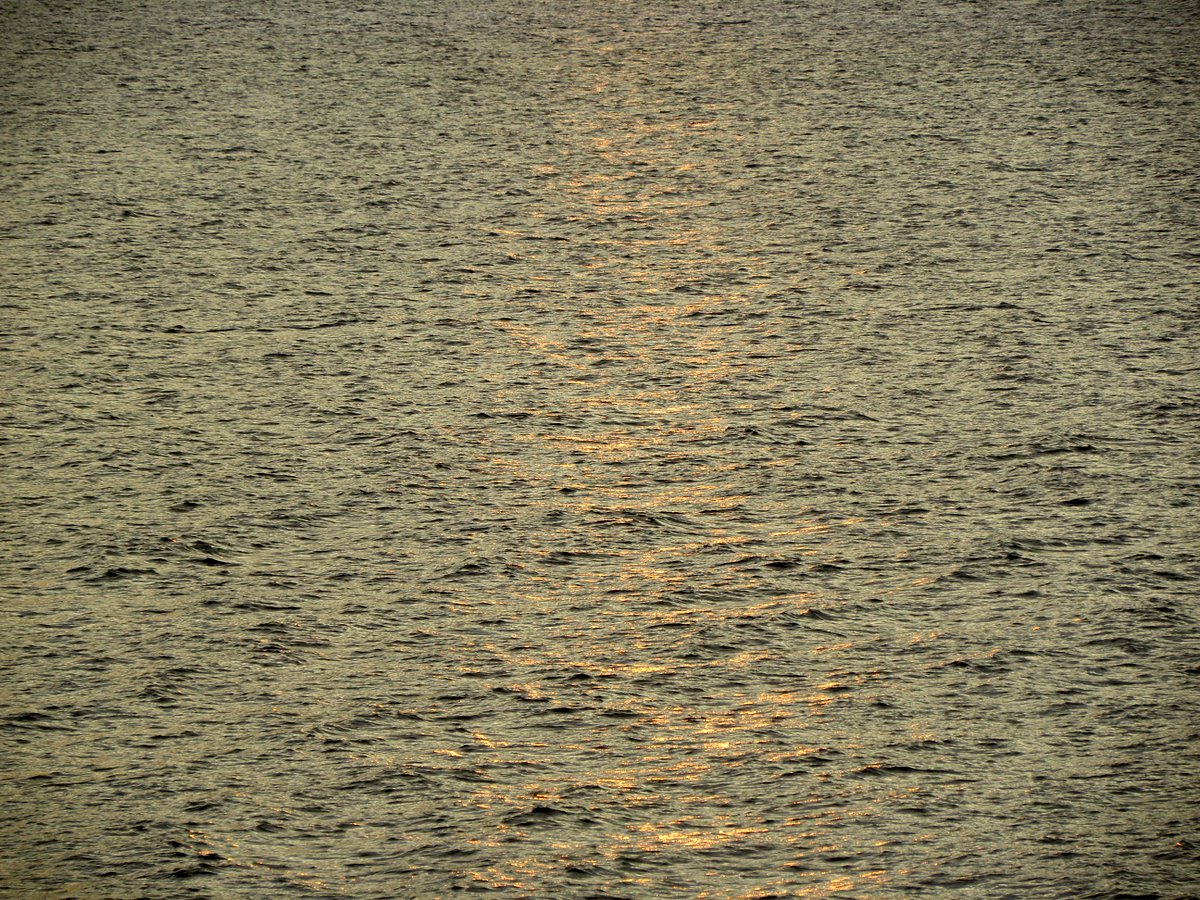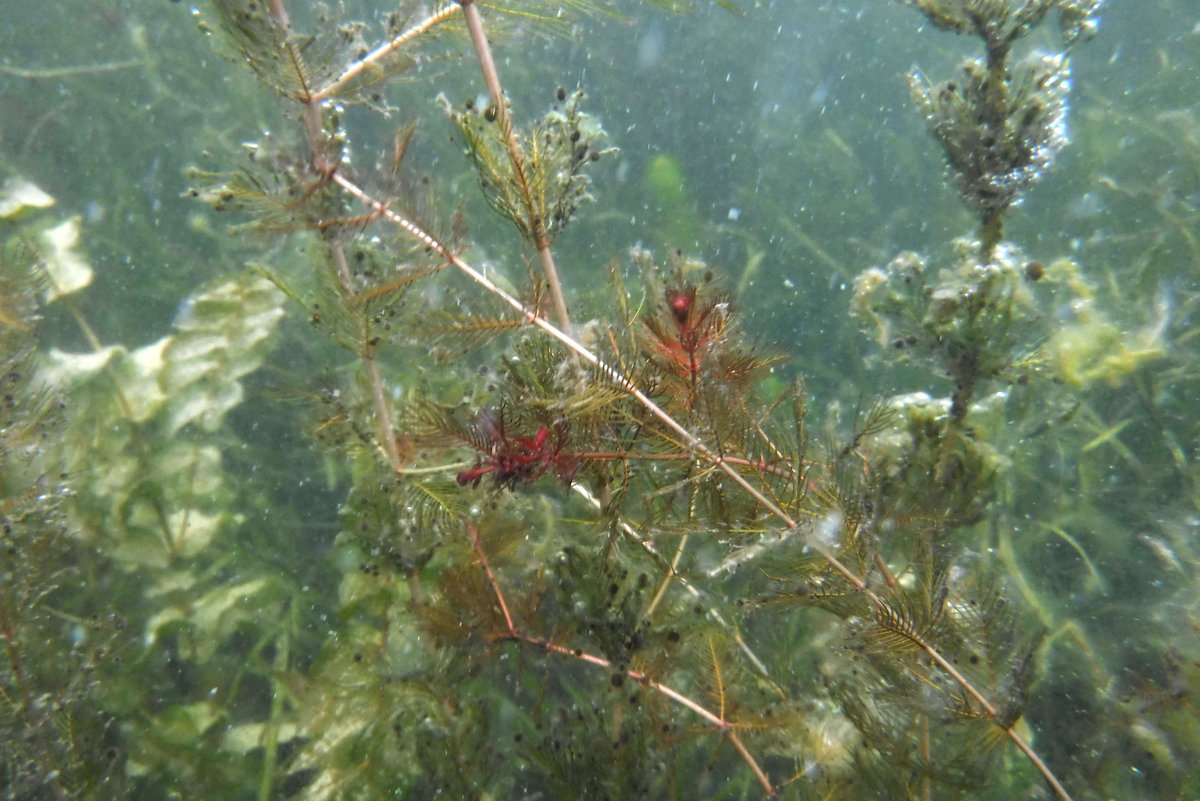Diving below the surface
Investigating the Lake Champlain from a new vantage

Sunset reflection off of Lake Champlain
I have a tendency to get overly obsessed with a topic. Every time I “discover” some pattern or new branch of natural history, I spend a frustrating moment wondering how I could have spent all these years as a naturalist overlooking something so fascinating, whether it be fire towers, sexual dimorphism in monarchs, or the rasping sounds of sword-bearing coneheads. My frustration quickly gives way to enthusiasm as I hungrily dig into the topic. Every now and then, these discoveries reveal entirely new worlds. These are rare moments with profound impact, at least on how I spend my free time. Most recently it has been the discovery of the world that exists below the surface of the water that has so completely captivated my attention.
I started fishing more seriously a couple summers ago and it was fishing that first lifted back the veil – though ever so slightly – of that mysterious world below the opaque surface of Lake Champlain. My previous experiences with fish went about as far as finding fish carcasses washed up on shore or seeing ripples emerge after a brief flop up to the surface of the water as some mysterious fish ambushed insects. This week, rather than dive into the finer points of the natural history of aquatic ecosystems, I wanted to bring you first into the chilly underwater depths of Lake Champlain, to reveal a world at once both so foreign and so close.
A window to look through
The lake is still warm, about 65 degrees, but even with a wetsuit on, I brace for the shock as I step to the edge of the water (you lose heat about 25x faster in water than air). The lake on this day is placid, a reprieve from the tumult that shook heavy rains from the skies the previous evening through morning. But even in the calm bay, there’s nothing graceful about my entry into the water. I’m overly excited to get out into the water with the fish so I absentmindedly put my mask on and start breathing through my snorkel while still standing in the shallows. Luckily no one’s there to watch my struggle as I awkwardly attempt to balance in the gentle lapping of the lake’s edge while putting on my fins. With one fin firmly on, and the other only half on, I lose my balance and flop onto my belly, crashing into the water. So much for not scaring away the fish.
Decked out in my gear I no longer belong to the land, and as soon as I’m horizontal, with the buoyant wetsuit floating me up above the shallow vegetation of what I think is mostly coontail and elodea, I immediately feel graceful, like I somehow belong here gliding through the water. There’s a part of snorkeling where it feels like I’m just trying to suppress my fear, fear of the darkness, of drowning, of large fish, of seeing the chain of a buoy disappear down into the endless, murky depths. But beyond that fear, there’s this wash of peace that calms me as I dive below the surface. On cold days, when there aren’t boats on the lake (the sound of a motor fills the water with an abrasive hum), it feels like I’ve found this world so completely devoid of the imprint of civilization. Curious bands of yellow perch, shiners, or bluegills come up to investigate the intrusion. A largemouth bass appears and my halo of shiners quickly disperses. The bass and I regard each other with curiosity (from me) and skepticism (from the fish).
With each time I go out snorkeling, I pull out new patterns in this world (e.g. ripples in the sand start to disappear when the water is more than 4′ deep, grass pike hang out more near the shallows in thick vegetation, etc). Through these patterns I’m slowly weaving together a story of this place. It takes time and patience, but I’m an eager student. The naivete of the fish is helpful. It also reminds me of dodos, those curious birds who, unaware of what threat humans posed, walked right up to the hand who dealt them their final blow. It’s this naivete too that engenders a sense of a primitive, unscathed wild(er)ness in the water.

A large (36″ or so) common
carp (Shelburne Bay)
Maybe it’s my own ignorance of aquatic ecosystems that affords me that perspective. Once back in the warmth of my house, I dive again, this time into research on freshwater ecology. I discover that, much like myself, many of the denizens of my secret world (e.g. common carp, largemouth bass, Eurasian watermilfoil, etc) are invasive species. I read about how the lake was so much denser with much larger fish before Europeans arrived and the coming of the commercial fishing industry in the lake (source). As I return to the water each time more informed, my lens has shifted, and now reading this underwater landscape, I’m reminded of the pervasive touch of human influence.

A mystery plant (perhaps an algae?), red at the tips and on the stem. Plants covered in oxygen bubbles from photosynthesis (Shelburne Bay)
After an hour and a half in the water, I shiver too much to even hold the camera steady for more than a few seconds; my enthusiasm seemed to easily override my better judgement. As I leave the water, I relish how completely and fully hooked I am. The lake is a mix of wild and cultivated, of free and managed. I’ll take it for what it is and enjoy getting to see my home from this new perspective.



